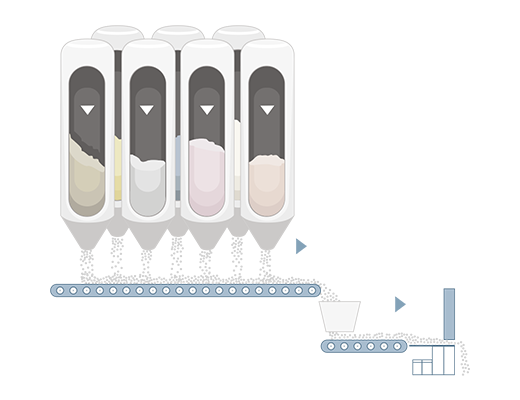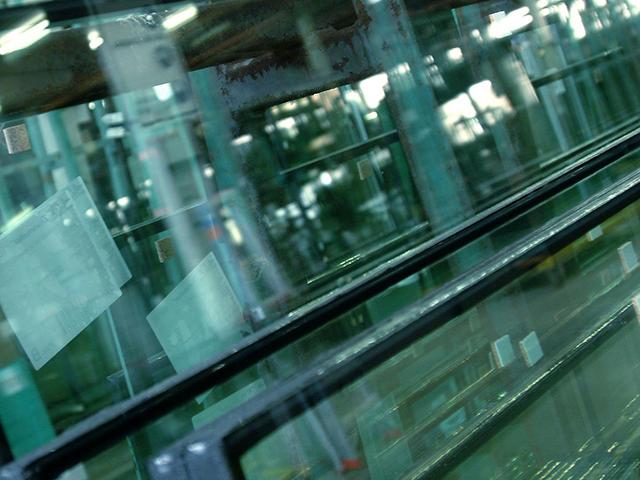The float process
The float process is now used almost universally for production of glass. In this technology molten glass floats out over a bath of molten tin. The "float glass" produced in this way is sold in large sheets for processing into secondary products. In fact nearly all flat glass products are now made from float glass.
Coating
Extremely thin, almost invisible layers of metal oxide are deposited on the glass to give it better insulation against cold and/or protection against the sun's rays. The coatings are applied either on-line on hot glass (pyrolytic coating) or by an electromagnetic process (vacuum coating).
Assembly into double or triple glazing
Two or three sheets of glass may be assembled into a surrounding metal frame which acts as a spacer, with an air-filled or gas-filled gap between them. The complete assembly is hermetically sealed. Double glazing affords twice the insulation power of single glazing, or even four time the power in the case of double glazing with super-insulating coating.
Assembly into laminated glass
Two or more sheets of glass may be assembled with one or more plastic separation layers made of PVB (polyvinylbutyral). Depending on its composition, the laminated glass affords greater protection for property (against break-in) or for persons (against gunshot, explosion or risk of falling through).
Toughening
The thermal toughening process consists of heating the glass to softening temperature (around 700°C) and then suddenly cooling it. Glass that has been toughened in this way is five times more resistant to thermal or mechanical shock. And when it does break it shatters into thousands of small non-cutting pieces. Chemical toughening consists of ionic exchange between the glass and a bath of molten salt which increases its mechanical strength.














